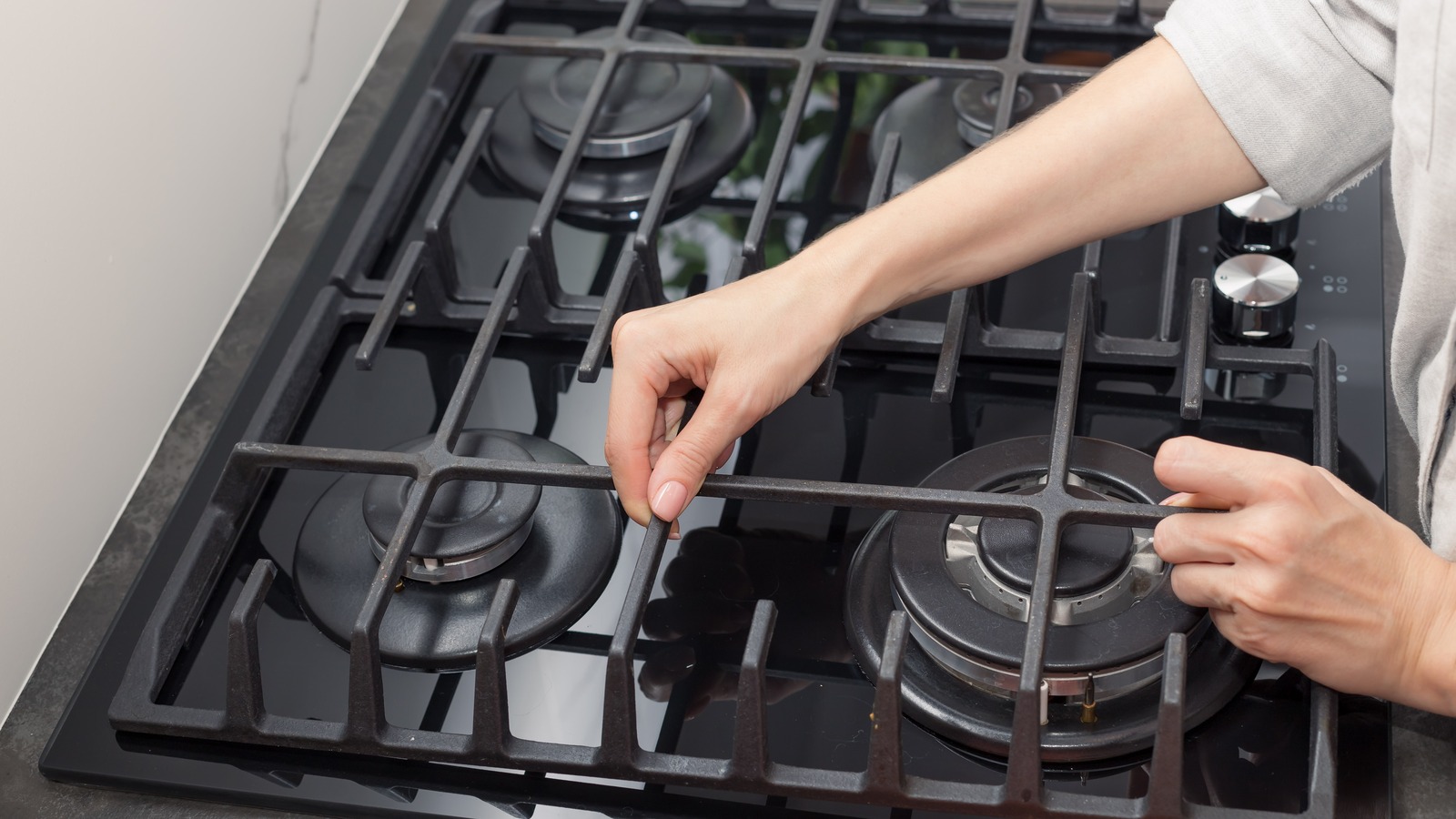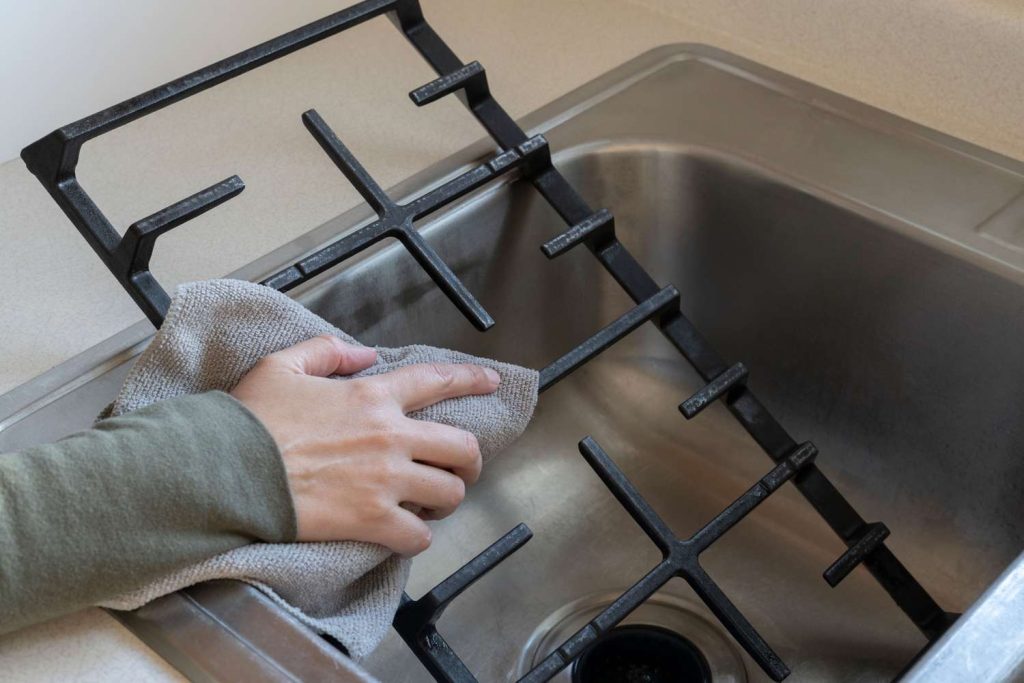The Ultimate Guide to Cleaning Stove Grates
I. Introduction
A. Importance of maintaining clean stove grates
Having clean stove grates is crucial for both the appearance and functionality of your stovetop. Dirty grates can affect the taste of your food, hinder proper heat distribution, and potentially become a fire hazard. Regular cleaning ensures optimal performance and extends the lifespan of your stove grates.
B. Benefits of regular cleaning
Regular cleaning of stove grates not only enhances the overall cooking experience but also provides several benefits. It eliminates grease, food residues, and burnt-on stains that can attract pests and bacteria. Additionally, it helps prevent clogs and gas flow issues while enhancing safety and maintaining a pristine kitchen environment.
C. Brief overview of the cleaning process
Cleaning stove grates involves removing them from the stove, selecting the appropriate cleaning method based on the grate material, and then scrubbing away dirt and grime. The process may vary slightly depending on the type of grates, but the steps generally involve using cleaning solutions, brushes, and rinsing thoroughly.
II. Understanding Stove Grate Materials
A. Different types of stove grates
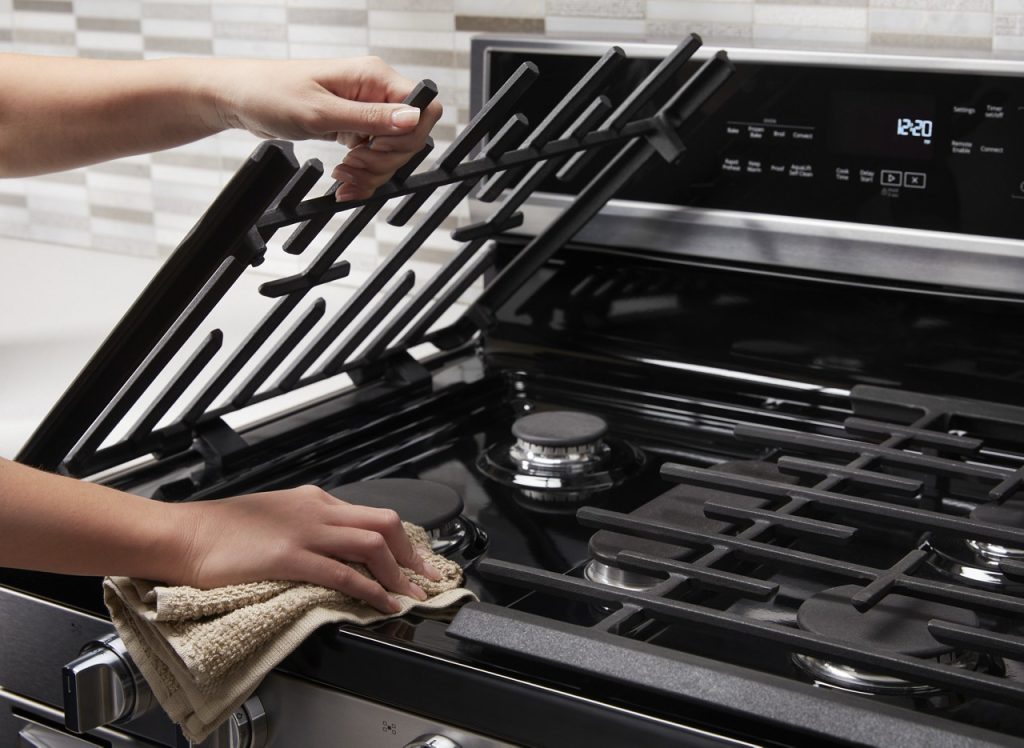
- Cast iron grates: Cast iron grates are known for their durability and ability to retain heat. They require special care to prevent rusting and maintain their seasoning.
- Porcelain grates: Porcelain grates feature a smooth, glossy finish that makes them easy to clean. However, they are prone to chipping and require gentle cleaning methods.
- Stainless steel grates: Stainless steel grates are resistant to corrosion and stains and are relatively easy to clean. However, they can show scratches and need regular maintenance to preserve their shine.
B. Factors to consider when cleaning different types of grates
When cleaning stove grates, it is crucial to consider the material they are made of as it determines the cleaning methods and products used. Factors to consider include the grate’s susceptibility to heat, scratching, chipping, and rust, as well as the appropriate cleaning agents that won’t damage the material.
III. Preparing for Cleaning
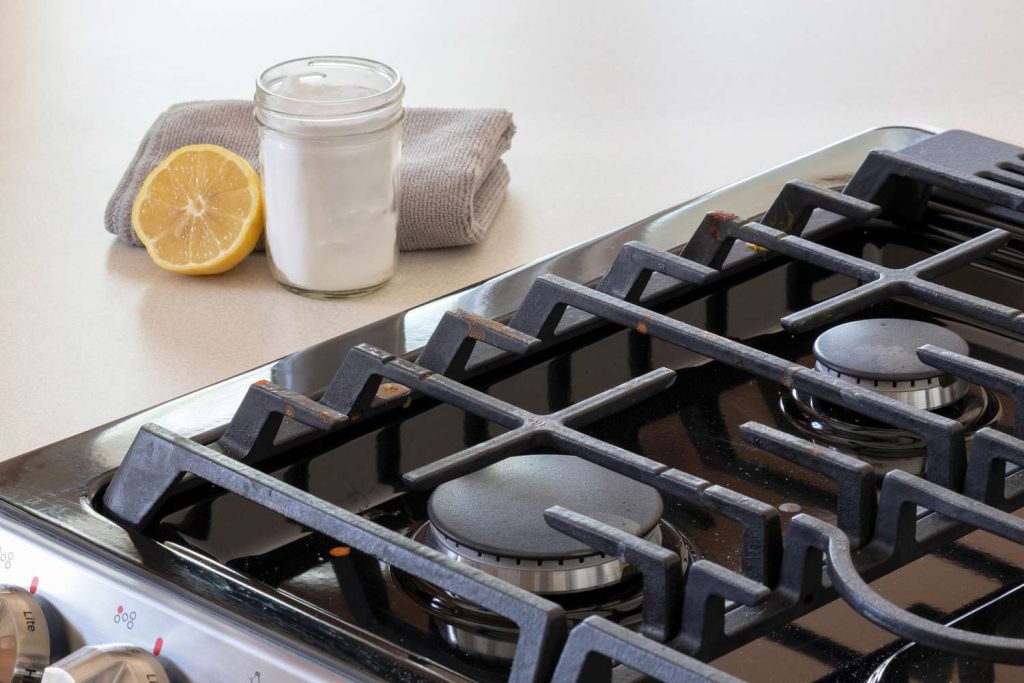
A. Safety precautions
Before starting the cleaning process, ensure your safety by turning off the stove and allowing it to cool completely. It’s also advisable to wear protective gloves to shield your hands from cleaning chemicals and sharp edges.
B. Gathering necessary supplies and tools
To efficiently clean your stove grates, gather the following supplies and tools:
- Protective gloves: Rubber gloves provide an extra layer of protection from cleaning agents and potential cuts.
- Dishwashing liquid or cleaning solution: Choose a mild dishwashing liquid or a specialized cleaning solution formulated for stove grates.
- Soft-bristle brush or sponge: Use a brush or sponge specifically designed for stove grates to avoid scratching the surface.
- Ziplock bags (optional): Ziplock bags can be used for an alternative cleaning method involving soaking the grates.
C. Removing grates from the stove
Most stove grates can be easily lifted or detached for cleaning. Follow the manufacturer’s instructions or gently lift the grates from the stove. If needed, use a screwdriver or other appropriate tool to release any clips or fasteners holding the grates in place.
IV. Cleaning Methods for Stove Grates
A. Cleaning cast iron grates
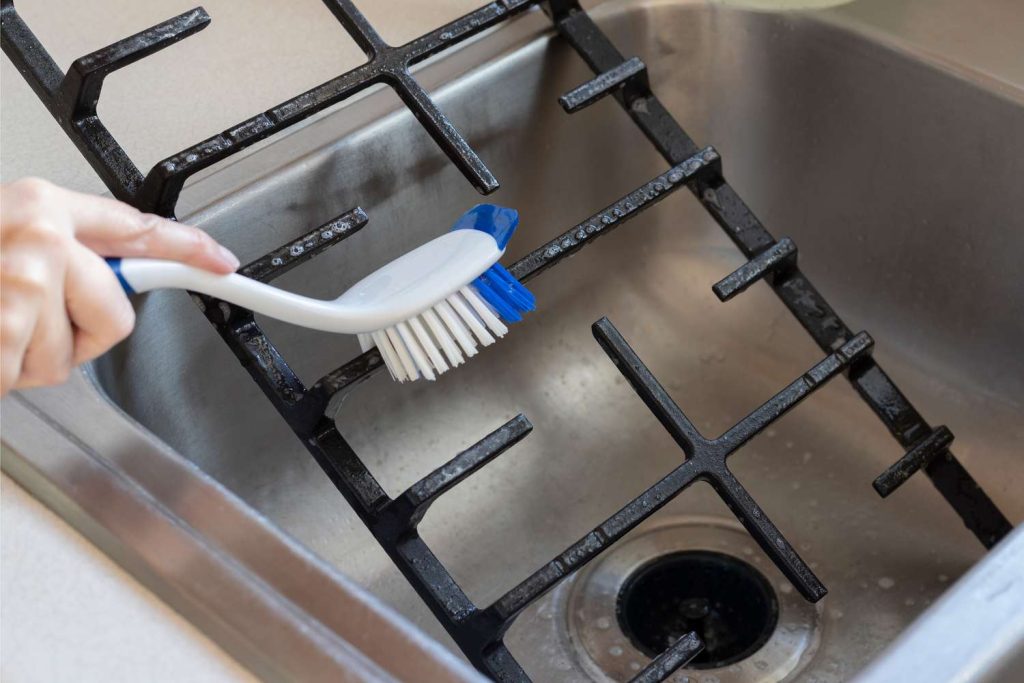
- Soaking in hot soapy water a. Fill a sink or basin with hot water and add a generous amount of dishwashing liquid. b. Remove the cast iron grates from the stove and place them in the soapy water. c. Allow the grates to soak for at least 30 minutes to loosen the dirt and grease.
- Scrubbing with a brush a. After soaking, use a soft-bristle brush to scrub the grates, removing any remaining residue. b. Pay attention to the gaps and corners of the grates to ensure thorough cleaning.
- Seasoning and drying a. Rinse the grates with warm water to remove any soap residue. b. Pat dry the grates with a clean towel. c. Apply a thin layer of cooking oil to the grates to prevent rust and maintain their seasoning. d. Place the grates in a warm oven for about an hour to allow the oil to penetrate and form a protective layer.
B. Cleaning porcelain grates
- Pre-soaking with vinegar solution a. In a spray bottle, mix equal parts white vinegar and water. b. Spray the vinegar solution onto the porcelain grates, ensuring thorough coverage. c. Let the solution sit for about 15 minutes to loosen any grease or stains.
- Gentle scrubbing with a sponge a. Use a sponge or non-abrasive brush to scrub the grates gently. b. Focus on any stubborn stains or buildup. c. Rinse the grates with warm water to remove any vinegar residue.
- Rinsing and drying a. Rinse the grates thoroughly with warm water. b. Use a clean towel to dry the grates, ensuring there is no moisture left.
C. Cleaning stainless steel grates
- Degreasing with dishwashing liquid a. Fill a sink or basin with warm water and add a few drops of dishwashing liquid. b. Remove the stainless steel grates from the stove and place them in the soapy water. c. Use a sponge or cloth to scrub away any grease or food particles. d. Rinse the grates with warm water to remove any soap residue.
- Removing stubborn stains with a paste a. In a small bowl, mix baking soda and water to create a thick paste. b. Apply the paste to any stubborn stains on the grates. c. Allow the paste to sit for a few minutes, then scrub with a brush or sponge. d. Rinse the grates with warm water to remove any residue.
- Polishing and buffing a. Use a microfiber cloth or towel to polish the grates, restoring their shine. b. Buff the grates in circular motions to remove any streaks or water marks. c. Ensure the grates are completely dry before placing them back on the stove.
V. Alternative Cleaning Methods
A. Using ammonia and ziplock bags
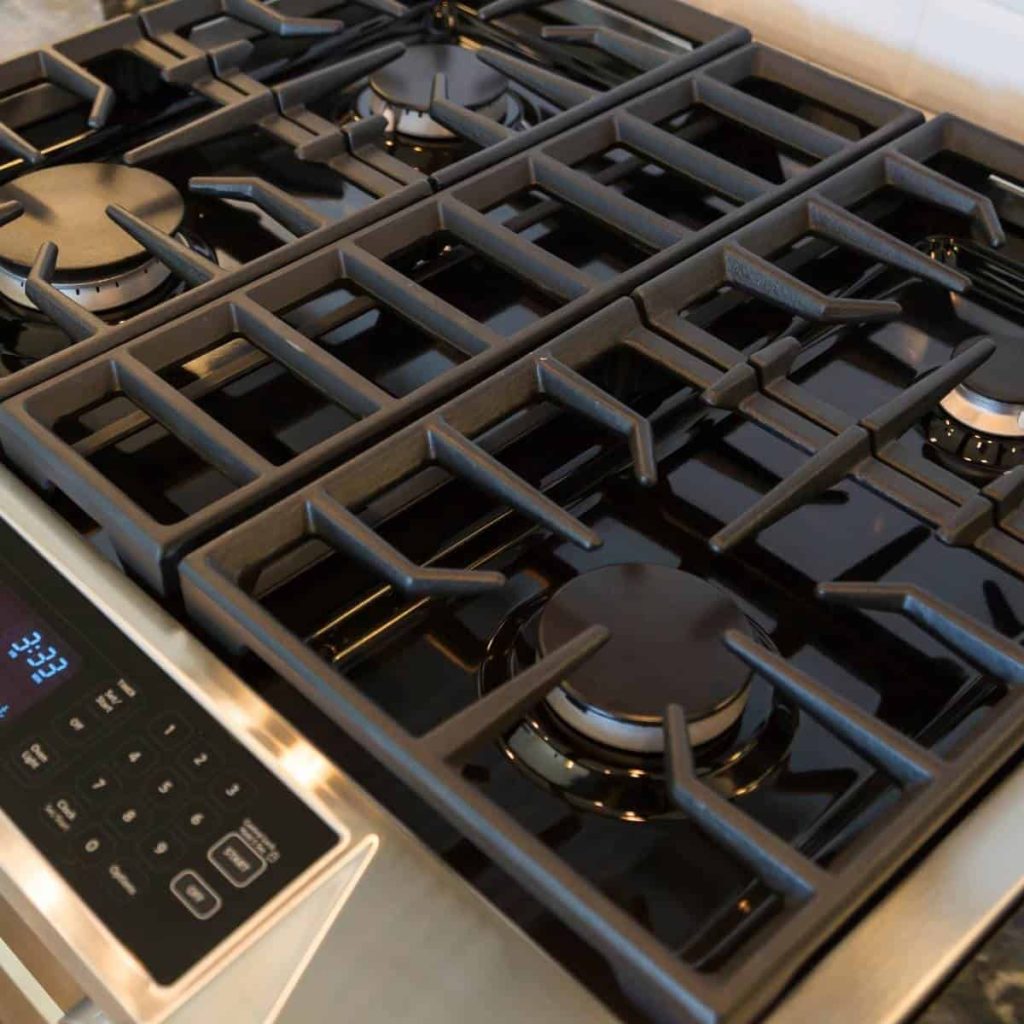
- Preparing ammonia solution a. In a well-ventilated area, mix equal parts ammonia and water in a bowl or container. b. Alternatively, you can use an ammonia-based cleaner following the instructions on the product.
- Placing grates in bags with ammonia solution a. Place the grates in large ziplock bags, ensuring they are completely submerged in the ammonia solution. b. Seal the bags tightly to prevent any leakage. c. Allow the grates to soak overnight or for at least 8 hours.
- Rinsing and drying a. Carefully remove the grates from the bags, taking precautions to avoid direct contact with the ammonia solution. b. Rinse the grates thoroughly with warm water to remove any ammonia residue. c. Place the grates on a clean towel or rack to air dry completely.
B. Using baking soda and vinegar
- Creating a paste with baking soda and vinegar a. In a small bowl, mix baking soda and white vinegar to create a thick paste. b. Adjust the amounts to achieve the desired consistency.
- Applying the paste to grates and scrubbing a. Apply the paste to the grates, focusing on areas with stubborn stains or grease buildup. b. Use a brush or sponge to scrub the grates, working the paste into the surface. c. Allow the paste to sit for a few minutes to penetrate the grime.
- Rinsing and drying a. Rinse the grates thoroughly with warm water to remove the paste and loosened debris. b. Dry the grates completely with a clean towel, ensuring no moisture remains.
VI. Maintenance Tips for Stove Grates
A. Regular cleaning schedule
- Establish a routine for cleaning stove grates, ideally after heavy cooking or at least once a month.
- Regular cleaning prevents the buildup of grease and food residue, making future cleaning easier.
B. Wiping spills immediately after cooking
- Promptly wipe up spills and splatters on the grates after each cooking session.
- This prevents stains and makes routine cleaning more manageable.
C. Preventing grease buildup
- Use a grease splatter screen or cover the grates when cooking greasy foods to minimize grease buildup.
- Regularly clean the burner pans and drip trays underneath the grates to prevent grease from accumulating.
VII. Conclusion
In conclusion, cleaning stove grates is an essential part of maintaining a clean and functional kitchen. Whether you have cast iron, porcelain, or stainless steel grates, there are various cleaning methods available. From soaking and scrubbing to using alternative solutions like ammonia and baking soda, you can keep your stove grates in pristine condition. Regular cleaning and maintenance will not only improve the efficiency of your cooking but also extend the lifespan of your grates. By following these cleaning methods and implementing maintenance tips, you’ll enjoy a sparkling clean stove and a pleasant cooking experience.
